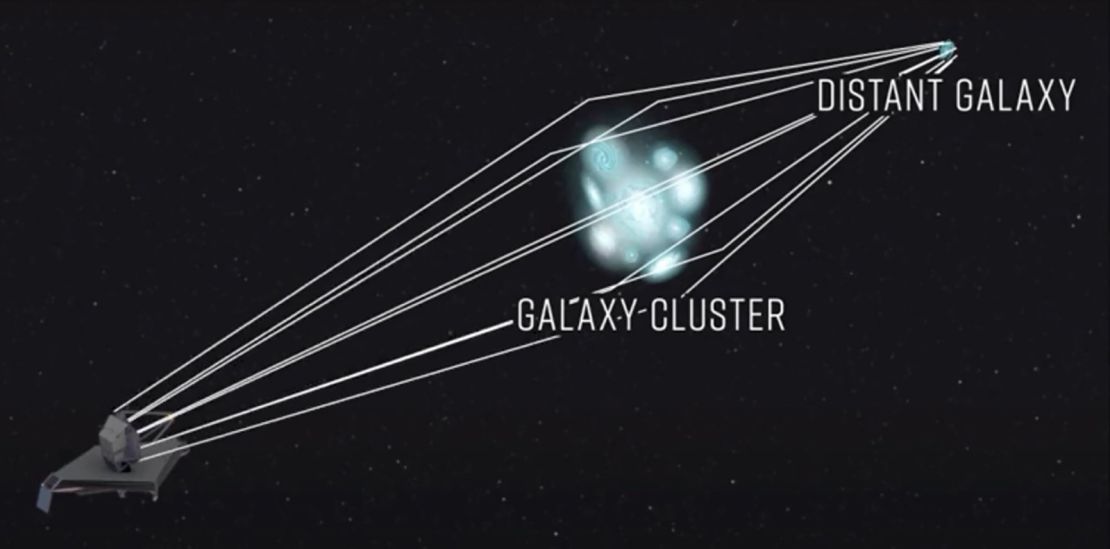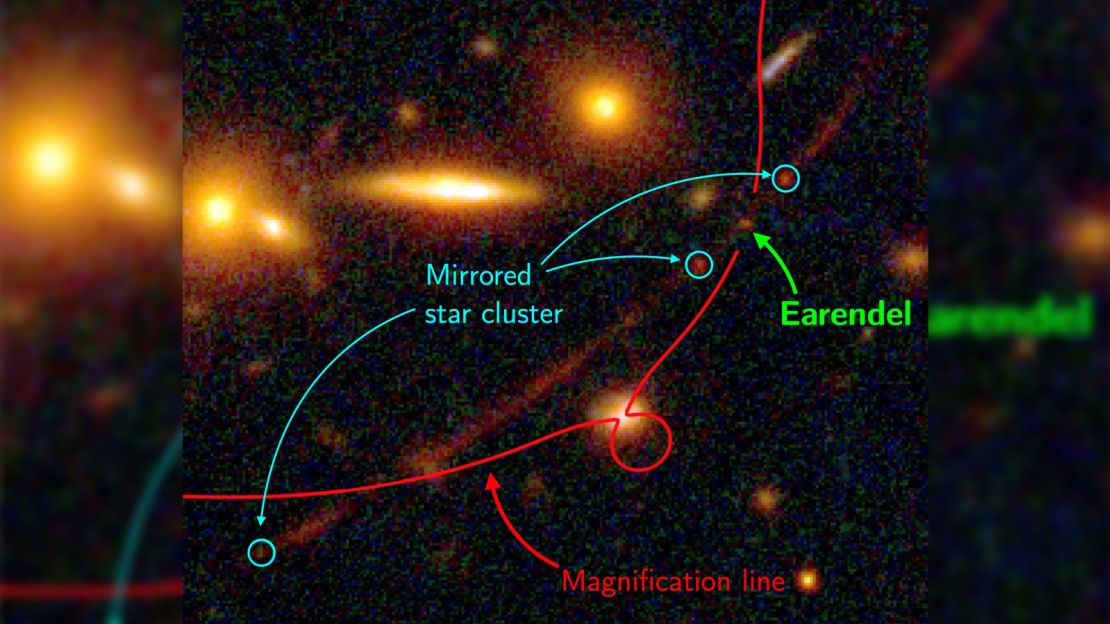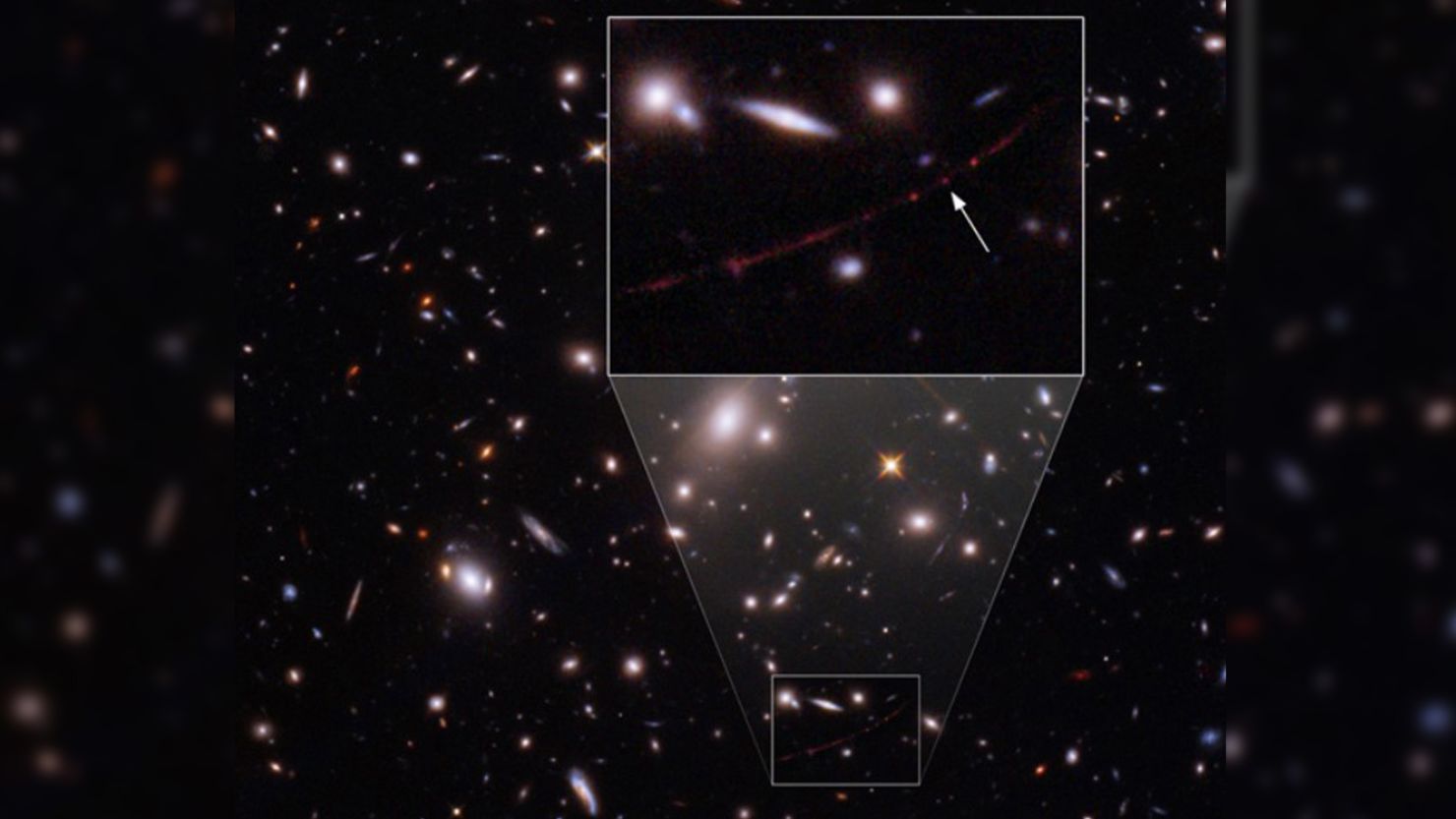Sign up for CNN’s Wonder Theory science newsletter. Explore the universe with news on fascinating discoveries, scientific advancements and more.
The Hubble Space Telescope has glimpsed the most distant single star it’s ever observed, glimmering 28 billion light-years away. And the star could be between 50 to 500 times more massive than our sun, and millions of times brighter.
It’s the farthest detection of a star yet, from 900 million years after the big bang. Astronomers have nicknamed the star Earendel, derived from an Old English words that means “morning star” or “rising light.”
A study detailing the findings published Wednesday in the journal Nature.
This observation breaks the record set by Hubble in 2018 when it observed a star that existed when the universe was around four billion years old. Earendel is so distant that the starlight has taken 12.9 billion years to reach us.
This observation of Earendel could help astronomers to investigate the early years of the universe.
“As we peer into the cosmos, we also look back in time, so these extreme high-resolution observations allow us to understand the building blocks of some of the very first galaxies,” said study coauthor Victoria Strait, a postdoctoral research at the Cosmic Dawn Center in Copenhagen, in a statement.
“When the light that we see from Earendel was emitted, the Universe was less than a billion years old; only 6% of its current age. At that time it was 4 billion lightyears away from the proto-Milky Way, but during the almost 13 billion years it took the light to reach us, the Universe has expanded so that it is now a staggering 28 billion lightyears away.”
The stars we see in the night sky all exist in our own Milky Way galaxy. Incredibly powerful telescopes can only see individual stars within the closest galaxies. But distant galaxies look like a blur of the light blended from the billions of stars they contain.

But gravitational lensing, which was predicted by Albert Einstein, allows for deeper gazing into the distant universe. Gravitational lensing occurs when closer objects act like a magnifying glass for distant objects. Gravity essentially warps and magnifies the light of distant background galaxies.
When light passes close to massive objects, it follows a curve around that object. If that object is between Earth (or in this case, Hubble) and the distant light source, it can actually deflect and send the light toward us, acting as a lens to magnify its intensity.
Many distant galaxies have been found this way.
In this case, the alignment of a massive cluster of galaxies acted like a magnifying glass and intensifying the light of Earendel thousands of times. This gravitational lensing, combined with nine hours of observation time on Hubble and an international team of astronomers, created the record-breaking image.

“Normally at these distances, entire galaxies look like small smudges, with the light from millions of stars blending together,” said lead author Brian Welch, astronomer at the Johns Hopkins University in Baltimore, in a statement. “The galaxy hosting this star has been magnified and distorted by gravitational lensing into a long crescent that we named the Sunrise Arc.”
To ensure that this truly is a single star, rather than two located very close to one another, the research team will use the recently launched James Webb Space Telescope to observe Earendel. Webb could also reveal the temperature and mass of the star.
“With James Webb, we will be able to confirm that Earendel is indeed just one star, and at the same time quantify which type of star it is,” said study coauthor Sune Toft, leader of the Cosmic Dawn Center and professor at the Niels Bohr Institute in Copenhagen, in a statement. “Webb will even allow us to measure its chemical composition. Potentially, Earendel could be the first known example of the Universe’s earliest generation of stars.”
Astronomers want to know more about the star’s composition because it was formed early after the universe began, long before the universe was filled with the heavy elements created by the deaths of massive stars.
Webb could reveal if Earendel is largely made of primordial hydrogen and helium, making it a Population III star – the stars hypothesized to exist shortly after the big bang.
“Earendel existed so long ago that it may not have had all the same raw materials as the stars around us today,” Welch said. “Studying Earendel will be a window into an era of the universe that we are unfamiliar with, but that led to everything we do know. It’s like we’ve been reading a really interesting book, but we started with the second chapter, and now we will have a chance to see how it all got started.”
And the Webb telescope may help astronomers to find even more distant stars than Hubble can find.
“With Webb, we may see stars even farther than Earendel, which would be incredibly exciting,” Welch said. “We’ll go as far back as we can. I would love to see Webb break Earendel’s distance record.”




